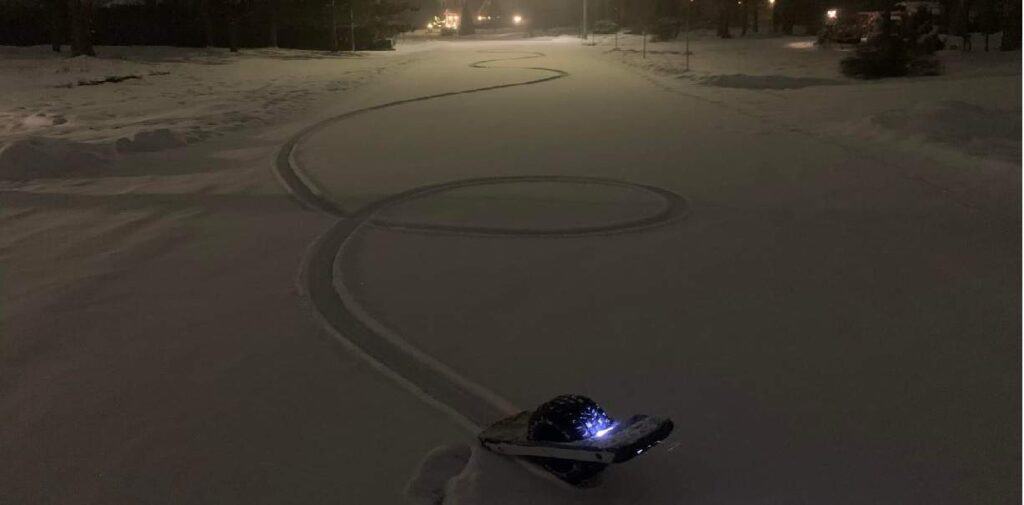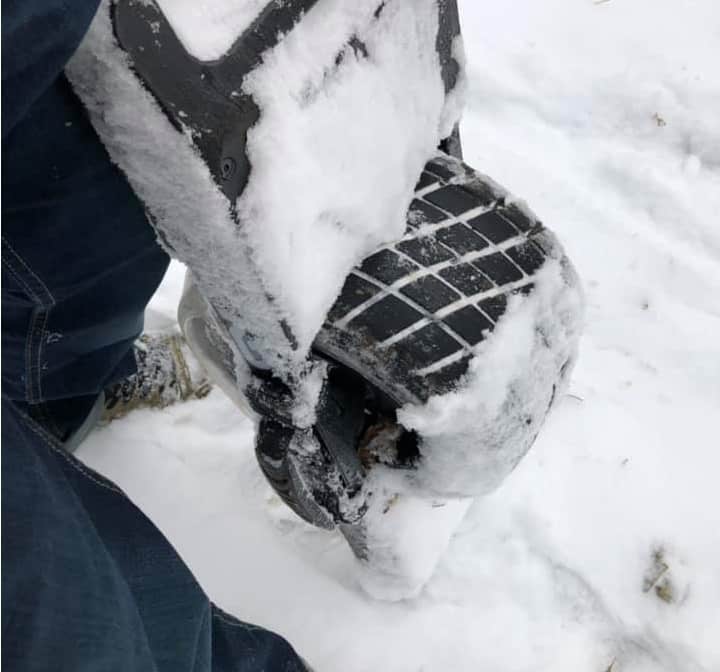New Englander have to deal with cold weather and likely snow for half the year which does put an epic damper on riding year round. Winter brings a new set of challenges for Onewheel riders. While the snowy landscapes offer a feeling that we’re snowboarding, we need to remember this is One wheel and its on slippery conditions.

Keeping Both You and the Board Warm
Staying warm keeps the ride enjoyable. Start with a base layer that wicks moisture away from your skin and then throw on an armored flannel because its winter and you can slip! Now the board reacts to cold weather. If you are constantly pushing it, the heat from the motor tends to warm the rails enough to keep the battery warm (well, warmer). A cold battery will either produce an error code 17, a message within the app, or just generally perform below expected. Without a strong battery, the power will be lessened.
- Keep the board warm prior to riding
- Don’t let it sit too long idle in the cold outdoors (try to keep it moving).
Onewheels Are Not Waterproof However…
Onewheels are not waterproof however they do hold pretty well against some wet conditions. No Onewheel has an official water resistance rating however Future Motion has improved the construction of these boards and they can handle more water than their predecessors.
The latest Onewheels (Pint, Pint X and GT) are built in a similar fashion (in comparison to the older generation onewheels) in which there are more composite components as well as gaskets that house the controller and battery. That being said, the bearings are still exposed to the wet conditions. While it can handle snow, I would recommend letting the board dry off indoors and wiping it off afterwards.
Do not ride a Onewheel XR 4208 or prior in wet conditions. These tend to not be good models for water resistance.
The Tire – The Foundation of Your Onewheel Winter Ride
Clearly a slick on snowy conditions is not the best choice however it can be done. It just isn’t the best experience in the world. To ride in snowy conditions, you really need to opt for a treaded tire and also lower the PSI so that you increase your tire’s surface area.
Even with a treaded tire, you will not be completely secure against icy or snowy conditions. If you plan on riding in the winter frequently I recommend buying a separate tire and making it studded. With a basic tire stud kit, the traction is greatly improved. There is a product called a soccasin which may be discontinued. It was essentially a textured bag that went around the wheel to provide more traction.
Onewheel Fenders and Snow
Ok so we use fenders to keep debris off our legs. Why not use a fender to keep snow off your leg? On a frigid day, this is no problem however when the snow starts to melt and gets a little wet and sticky, you can get build-up inside the fender well. If you insist on a Fender, I recommend a convertible fender such as Flight Fin’s Flight Shield, the Hybrid Fender or TFL’s Droptop.

All three allow for you to get easy access to the underside of the fender and clear it out. I prefer the Flight Shield because it is a more-loose fit and never seems to bind in the snow.
Onewheel Foot Pads in Snow
Grip tape is going to clog the minute you take your foot off the footpads and step on the snow. ProRide traction pads are made of a yoga mat like material that are pretty grippy even in wet conditions. I recommend seeking a foam footpad or at least bring a nylon brush with you so that you can keep your sensor and rear foot pad clear of snow.
Riding the Snow on a Onewheel
I’ll be honest, riding a Onewheel in the snow pales in comparison to snowboarding. With snowboarding, carving down a mountainside is great. A Onewheel carves dry terrain like a champ however on snow you need to be careful.
Because you are always worried about the single wheel slipping out from under you, carving is not enjoyable in my opinion. You constantly worry when traversing that the wheel will quickly loose traction. I’ve fallen a few times riding in snowy and frosty conditions to the point that I no longer ride in these conditions.
My feeling is if it is snowing, its time to shred on a snowboard. Save the Onewheel for the days that are not snowboarding days and leave the snow for the snowboard. No matter how good of a rider you are, you can really only gain speed by bee-lining on a Onewheel. Traversing and carving puts too much risk of slippage.
Ice and even frosted grass can be the worst because you wont see it coming. On a snowboard, you have that metal edge to hold on, but with Onewheel you are hopeless unless you have studded the tire.
- Do not attempt to shift weight drastically
- Always try to maintain a steady speed (do not quickly accelerate or decelerate).
- Choose frozen ground or snow over frosty grass or icy spots.
Safety Protocols: Navigating Winter Hazards
Wear the necessary safety gear when going out in the winter on your Onewheel. I personally do not recommend using any board other than a Pint, Pint X or GT. If you have waterproofed your board or have a custom VESC build where you’ve sealed up the housing, then the snow is waiting for you.
Its not as thrilling as snowboarding in the snow however know that the Onewheel can handle it. Frozen trails actual are fun. Because there is no loose dirt, the tire is better at biting into frozen terrain. Just always keep your eyes on the trail in front of you and look for that hidden ice.
